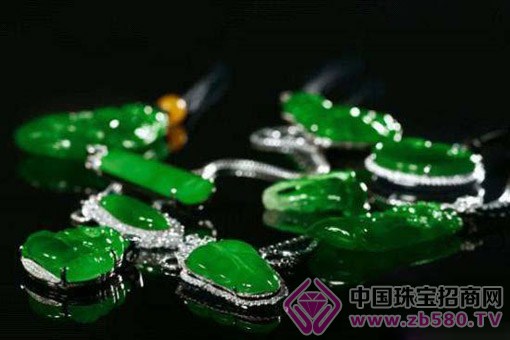I sometimes meet some customers who will ask "What is jade?" Generally speaking, from a commercial point of view, the explanation for a better understanding of customers is that this is a jade from Myanmar, also known as Burmese jade, which is a well-known commercial name.
From the gemological point of view, jade is a collection of gem-quality jadeite, in addition to jadeite, there are other minor secondary such as sodium chromite, omphacite, hornblende, albite, etc. Mineral composition, which constitutes a variety of chic varieties of jade.

In foreign countries, jadeite is mainly called jadeite, which is named after the main mineral name. When the secondary mineral content is less than 20%, it will not participate in the naming. If the secondary mineral content is between 20% and 50%, the secondary mineral name can be described from the petrological point of view. For example, the jade bracelet with blue flowers is the main mineral composition of jadeite, but it also contains a certain amount of omphacite. It can be said to be jadeite containing omphacite. It is also classified as jadeite from commercial.
In general, the vast majority of jadeite is a type of mineral combination based on jadeite. For example, the glass type with the seed head as the main value and the jadeite of the ice type are jadeite with high purity of jadeite content. If it contains elements such as chromium, iron and manganese, it will form the color of jadeite. Other varieties of jadeite jade have different content, but they are mainly made of jadeite, such as white-green, hibiscus, bean, etc. These are jade in the traditional sense.
There are two main types of jadeite containing a certain amount of omphacite or directly dominated by it. The former is a combination of omphacite and hard jade. The color is usually light, mainly grayish green, similar to oil green. One is based on omphacite, which is usually darker in color. It is black, grayish black, dark green, etc. The market is called Mo Cui. Early old connoisseurs did not agree that they were orthodox jade, but they are now recognized as jade.
There is also a jadeite dominated by sodium chromite, which is usually dry green, with a green color but a very dry head, opaque and low value. There is also a black jadeite similar to the bone color of black-bone chicken, which also contains a large amount of sodium chrome pyroxene, but compared to the previous green Hui graphite jade, the light is not green under light, and the value is lower. These two early days are not considered to be orthodox jade, but nowadays people are recognized as jade.
Another kind of jadeite, which is mainly composed of albite, is light in color, white or grayish white. It is also known as water foam, and it is not recognized as jade. Because the omphacite or sodium chromite-based jadeite is consistent in mineral composition and nature with traditional jadeite, while the mineral properties of the water-foamed pulp are different, the density is lower, the refractive index and hardness are also reduced, and it belongs to another jade. . Therefore, it can only be called albite jade, the same reason, the so-called Moxixi stone is also the case, does not belong to the scope of jade.
From the perspective of minerals, it seems that the jade looks a bit more complicated, but it can understand the structural combination of jade more deeply, which is conducive to deepen the understanding and value evaluation of jade. For example, the best quality of Mo Cui Li is Green Hui Graphite Cui, Green Hui Petroleum Green is also the best oil green variety, dry green is different from the characteristics of common jade, etc., this knowledge is quite suitable for deep players to continue to explore research.
PLA Fiber(Core Fiber)
Suzhou Makeit Technology Co., Ltd , https://www.psffiber.com
![<?echo $_SERVER['SERVER_NAME'];?>](/template/twentyseventeen/skin/images/header.jpg)